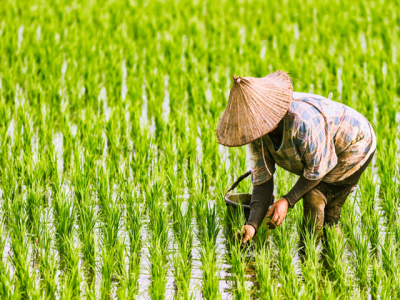Vietnam Jan-Oct coffee exports seen up 21.5 pct, rice to grow 3.4 pct

Vietnam exported $180 million worth of rice from January to October 2018. Photo by Shutterstock/FenlioQ
Vietnam’s coffee exports grew 21.5 percent and rice exports 3.4 percent year-on-year in the first ten months, government data showed on Monday.
Coffee
Coffee exports from Vietnam will rise an estimated 21.5 percent between January and October from a year ago to 1.58 million tons, equal to 26.3 million 60-kg bags, the General Statistics Office said in a report on Monday.
Coffee export revenue for Vietnam, the world’s biggest producer of the robusta bean, rose 1.1 percent to $2.98 billion in the 10-month period, the report said.
October coffee exports were estimated at 130,000 tons, worth $230 million.
Rice
Rice exports in January-October from Vietnam were forecast to rise 3.4 percent from a year ago to 5.24 million tons. Revenue from rice exports in the period was forecast to grow 16.1 percent year-on-year to $2.64 billion.
October rice exports from Vietnam, the world’s third-largest shipper of the grain, were recorded at 350,000 tons, worth $180 million.
Energy
Vietnam’s January-October crude oil exports plunged 45.4 percent year-on-year to an estimated 3.22 million tons.
Crude oil export revenue in the first 10 months of 2018 fell 24.8 percent to $1.82 billion.
Oil product imports in the 10-month period were estimated at 10 million tonnes, falling 5.1 percent from the same period last year, while the value of product imports rose 20 percent to $6.77 billion.
Vietnam’s January-to-October liquefied petroleum gas imports increased 5.7 percent from a year earlier to 1.2 million tons.
Có thể bạn quan tâm
 HCM City specifies key agricultural products
HCM City specifies key agricultural products The administration of Ho Chi Minh City has issued a list of key agricultural products to develop to improve the income and living standards of rural residents.
 The worry of Vietnamese agricultural products
The worry of Vietnamese agricultural products China is the largest export market of Vietnamese agricultural, forestry and fishery products, but the country is expanding their production
 Agricultural cooperatives in HCMC need more support
Agricultural cooperatives in HCMC need more support Yet due to poor management and loose connections among members, the inner economic force of these organizations are still weak.